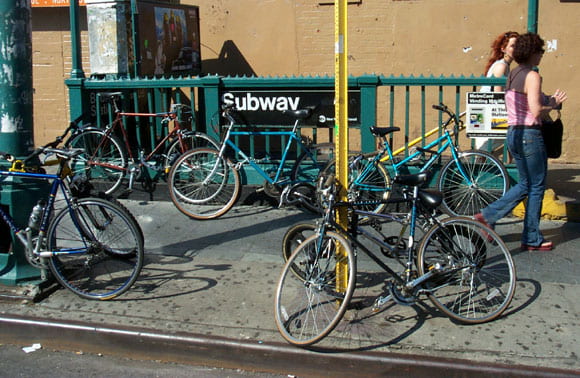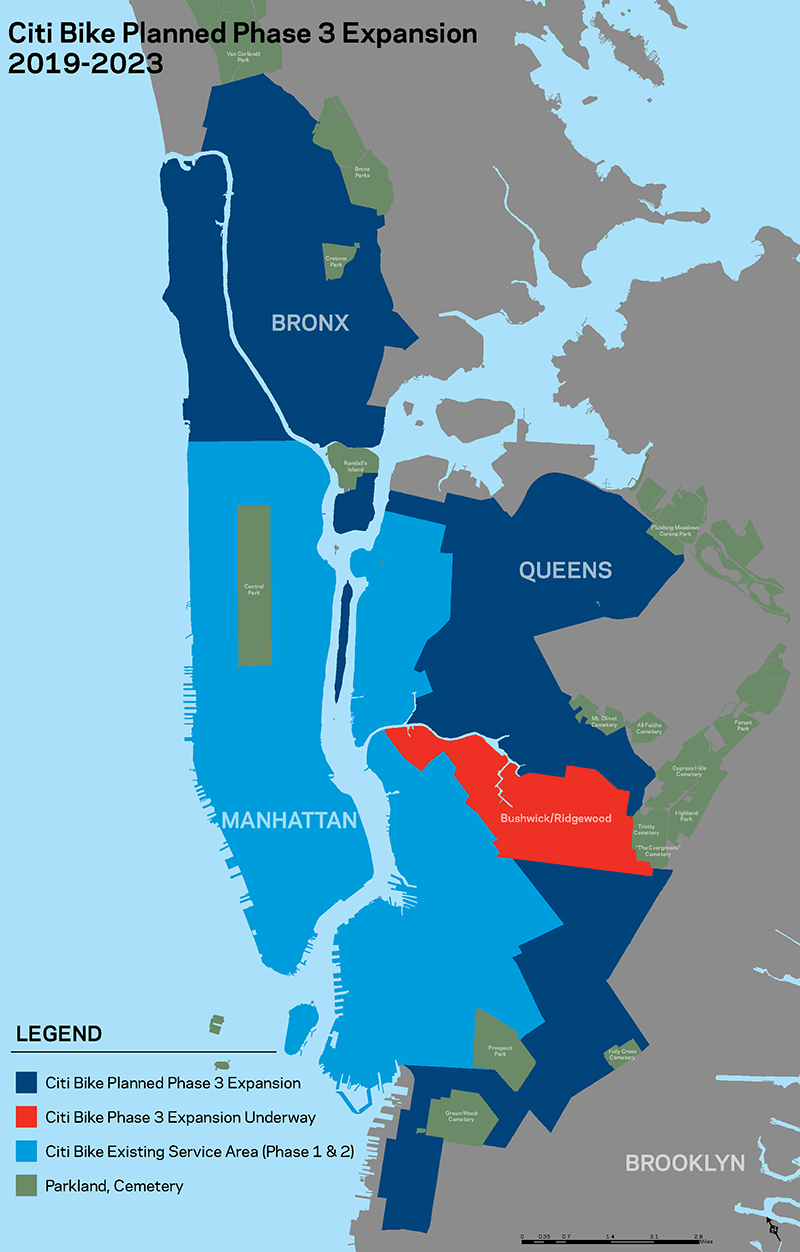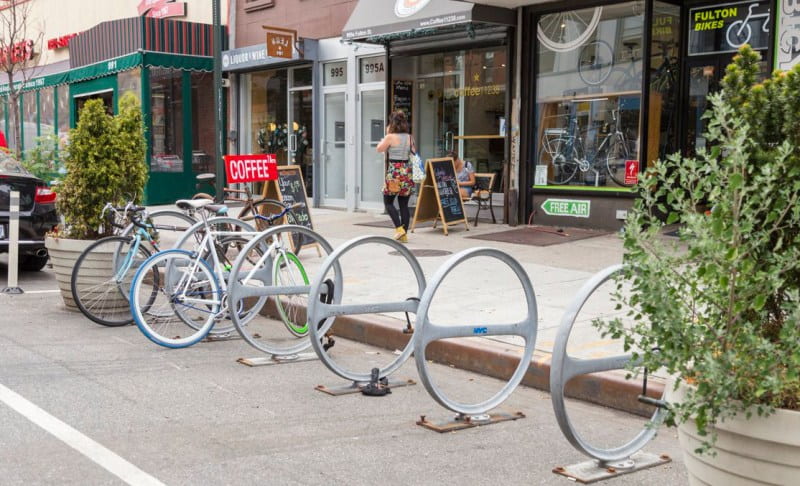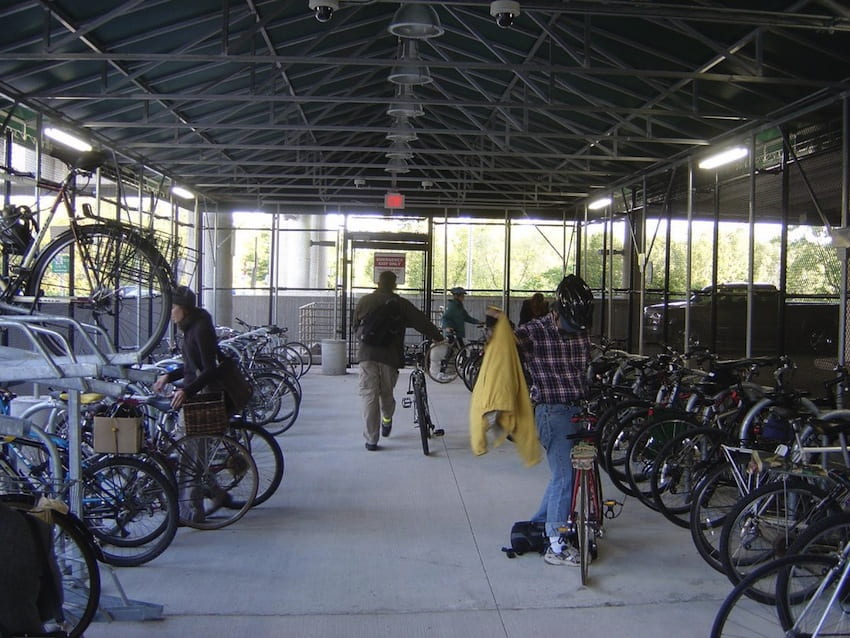by Ben Listman

Over the course of the COVID pandemic, cities around the world have seen an increase in the use of bicycles. Many have found cycling necessary in order to avoid public transit or as a means of safely exercising. The decrease in vehicular traffic also helped to encourage many to ride bikes as the absence of cars created a perception of safer streets. The pandemic has acted as an accelerant for an already growing trend, and it showed cities just how prepared, or unprepared they were for such growth. New York City, for example, has been somewhat able to accommodate the volume of new cyclists by closing off streets, and dedicating them to pedestrians and cyclists. However, the City was less prepared to account for the increase in bicycle parking. As bicycle theft surged 27% in October of 2020, it became clear that not only ample, but also secure bike parking was missing.
More than overwhelming robust systems, the pandemic exposed already existing deficiencies and inequities in many urban realms – cycling infrastructure being one of them. NYC has long lacked sufficient complementary infrastructure to its already limited bike lane network. With close to 3 million on-street parking spaces, NYC has 100 times more car parking spaces than bicycle parking spaces.
Similar to many exposed inequities in NYC, deficient cycling infrastructure disproportionately affects predominantly low-income neighborhoods and communities of color. In addition to considerably more cycling deaths due to a lack of protected bike lanes, these neighborhoods also are the most lacking in bicycle parking. Low-income New Yorkers are also more likely to live in transit deserts, have difficulty affording transit fares, and rely on bicycles for transportation. These New Yorkers might also be less able to replace a stolen bicycle, less likely to live and work in buildings that offer bicycle storage, and less likely to live in an area served by Citi Bike. For example, the map below shows areas of the Bronx, Brooklyn, and Queens that are slated for Citi Bike expansion in the near future, still with much of those areas neglected.
 Image: Major Citi Bike Expansion Map
Image: Major Citi Bike Expansion Map
Bicycle parking can connect New Yorkers to more transportation options, particularly in transit deserts. The City knows this, and included secure bicycle parking near transit hubs in the Department of Transportation’s 2016 strategic plan, citing best practices from cities like Chicago, Los Angeles, Malmö in Sweden, and Utrecht in the Netherlands. Even in 1999, the City conducted an extensive survey, finding a need for secure bike parking near transit hubs. More recently, as part of the Green Wave initiative, the City planned to pilot secure, high capacity bike parking at Myrtle-Wyckoff in Brooklyn, and near Union Square using a shipping container design. Nearing the end of Mayor De Blasio’s second term, however, NYC has yet to realize its vision for secure bike parking.
Most bicycle parking in NYC consists of metal racks on sidewalks or class 2 bicycle parking. It is unprotected, exposed to the elements, and not particularly secure. It is ideal for short-term parking. Class 1 bicycle parking is sheltered from the elements, and good for overnight and long-term storage. This type of parking is normally only privately accessible in offices, apartment buildings, schools, or to paying customers.
 Image: NYC BikeCorral
Image: NYC BikeCorral
All current publicly available bicycle parking in NYC is vulnerable to theft, and not suitable for long-term parking. The Massachusetts Bay Transportation Authority (MBTA) offers Pedal and Park Facilities, which are secure, enclosed parking areas for 50-150 bikes. They have surveillance cameras and controlled door access and are free for CharlieCard holders (the reusable cards for the MBTA subways). Cages such as the MBTA Pedal and Park Facilities are common in transit hubs. They allow bicycle commuters to more easily access transit stations and store their bicycle in a secure location accessible by some sort of key card. A Department of City Planning (DCP) report from 2009 examines the usability of available space around transit centers, such as beneath staircases and in the unused mezzanine level space of many MTA subway stations. The report acknowledges the flexibility and ease of construction of cage-style secure parking, making it relatively more feasible than automated parking machines, for example.
Many secure bike parking initiatives have run into trouble when it comes to cost and feasibility. The 2009 DCP report expresses concern for cost, “particularly at locations that do not demonstrate a very high demand for bicycle parking.” This would spell trouble for stations at the edges of transit deserts that might not demonstrate high ridership numbers compared to more centrally located subway stations. However, because of the flexibility and variability of cage-style bike parking, lower capacity cages can be tested at locations, demand can be measured, and additional lockers can be installed, or currently installed lockers can be expanded and changed.

Image: MBTA Pedal and Park Cage
The COVID pandemic has shown NYC just how behind it is concerning cycling infrastructure. Just as the City aims to expand its network of protected bike lanes, it must also expand complementary infrastructure in the form of secure bicycle parking. Similarly, just as priority must be given to low-income areas that lack protected bike lanes, priority must be given to those same areas when it comes to secure bike parking. The City has endlessly researched secure bicycle parking for over twenty years and has fallen short of implementation numerous times. NYC should strongly consider testing the implementation of class 1 bicycle parking facilities at transit centers and in transit deserts to facilitate safe cycle commuting door-to-door. The rise in bicycle ridership seen during this pandemic has been the wake-up call the City has needed. NYC has the opportunity to create greater equity in access to public transit, and emerge from the pandemic as a stronger city.
Cover image source: No Parking in Sight